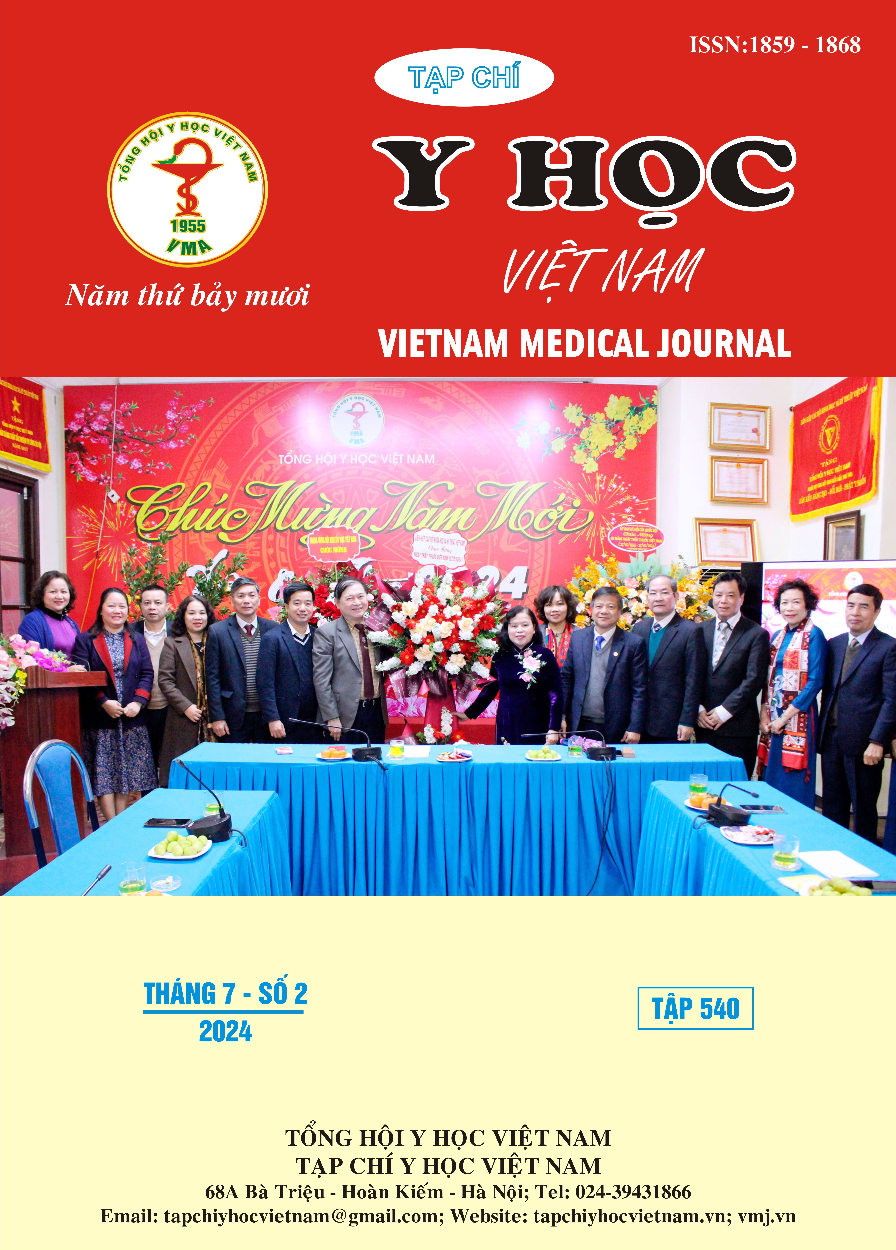STUDYING THE LIPID PEROXIDATION PROCESS IN HUMAN SKIN TISSUE WITH PHOTO-AGED USING IMMUNOHISTOCHEMISTRY METHOD
Main Article Content
Abstract
Objective: Evaluate the impact of light on lipid peroxidation of skin tissue in various conditions by immunohistochemistry method with two markers MDA AND 4-HNE. Materials and methods: We studed 09 skin samples of human in various conditions by experimental methods and using lighting model aimed at causing photoaging with intensity from1200 lux 2500 lux (warelength from 450nm-760nm) for 350 days. Using immunohistochemical staining technique those skin samples and determinating of 2 markers MDA and 4-HNE before and after illumination experiments. Evaluate the level of expression by quantitative stereoscopic method according to the ratio of marker volume/skin tissue volume on slide. Results: The expression level of 2 markers MDA and 4-HNE increased significantly according to the light exposure area from the range 1200 lux (MDA: 5,69%, 4-HNE: 6,13%) to the range 2500 lux (MDA: 10,95%, 4-HNE: 10,59%) compared to the control group that without illumination to them (MDA: 5,44%, 4-HNE: 5,18%) after 350 days. Conclusion: The process of lipid peroxidation in skin tissue occurs faster and more strongly with the impact of light. Both two markers MDA and 4-HNE increased significantly in photoaging skin tissue.
Article Details
Keywords
photoaging, lipid peroxidation, Malondialdehyd, 4-Hydroxynonenal.
References
2. Sohal RS, Orr WC. (2012). The redox stress hypothesis of aging. Free Radic Biol Med; 52(3): 539-55
3. Farris PK, Valacchi G. (2022). Ultraviolet Light Protection: Is It Really Enough? Antioxidants; 11(8)
4. Ayala A, Munoz MF, Arguelles S. (2014). Lipid peroxydation: production, metabolism, and signaling mechanisms of malondialdehyd and 4-hydroxy-2-nonenal. Oxid Med Cell Longev; 2014:360438.
5. Shoeb M, Ansari NH, Srivastava SK, Ramana KV. (2014). 4-hydroxynonenal in the pathogenesis and progression of human diseases. Curr Med Chem; 21(2):230-7.
6. Hermann E, Rudolf SJ, Helmward Z. (1991).Chemistry and biochemistry of 4-hydroxynonenal, malonaldehyd and related aldehyds. Free RadicalBiology& Medicin;11:81-128.
7. Liou GY, Storz P. (2015). Detecting reactive oxygen species by immunohistochemistry. Methods Mol Biol;1292:97-104.
8. Howard, C.V. and Reed, M.G. (2005). Unbiased Stereology: Three-Dimensional Measurement in Microscopy. 2nd Edition, Bios Scientific Publishers, Oxford.


